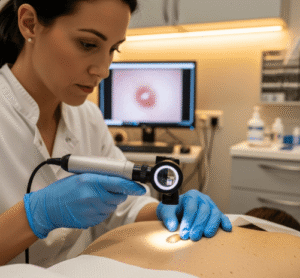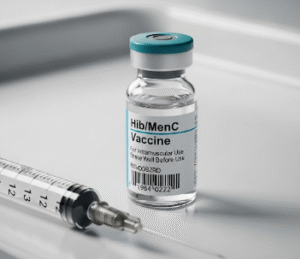Overview
Pulsus Paradoxus is a clinical sign where there is an exaggerated drop in systolic blood pressure (≥10 mmHg) during inspiration. While a small decrease in blood pressure during inhalation is normal, pulsus paradoxus refers to a markedly abnormal decline that often signals serious underlying cardiovascular or respiratory conditions.
This phenomenon is commonly associated with cardiac tamponade, constrictive pericarditis, severe asthma, and chronic obstructive pulmonary disease (COPD). Detecting pulsus paradoxus is crucial because it often points to a life-threatening emergency that requires immediate medical attention.
In Korea, advanced cardiology, pulmonology, and emergency medicine services are available for diagnosing and managing pulsus paradoxus, especially in top hospitals equipped with echocardiography, cardiac catheterization, and intensive care units.
➤ Abnormal drop in systolic BP (>10 mmHg) during inspiration
➤ Key indicator of cardiac or respiratory emergencies
➤ Requires urgent evaluation and treatment of underlying cause
Key Facts
➤ Normal inspiration decreases systolic BP by ≤10 mmHg.
➤ In pulsus paradoxus, the drop exceeds 10 mmHg.
➤ Most commonly associated with cardiac tamponade.
➤ Can also occur in asthma, COPD, pulmonary embolism, and shock.
➤ Requires careful physical exam and confirmatory tests.
What is Pulsus Paradoxus?
Pulsus paradoxus is not a disease itself but a sign of an underlying pathological condition. It represents a marked exaggeration of normal physiologic changes during breathing.
Normally, inspiration causes a slight fall in blood pressure due to changes in intrathoracic pressure. However, in pulsus paradoxus, this fall is so pronounced that it becomes clinically significant and detectable during blood pressure measurement or arterial line monitoring.
What Symptoms Are Related To
Since pulsus paradoxus is a sign, it is not always noticed by the patient directly. Instead, it accompanies symptoms of the underlying disease, such as:
➤ Shortness of breath or difficulty breathing (seen in asthma, COPD, or cardiac tamponade).
➤ Chest pain or pressure (often linked to pericardial disease).
➤ Rapid heartbeat or palpitations.
➤ Dizziness, fainting, or low blood pressure symptoms.
➤ Swelling in legs or abdomen (in pericarditis or heart failure).
➤ Severe wheezing and coughing (in obstructive lung disease).
What Causes / Possible Causes
Pulsus paradoxus occurs due to impaired ventricular filling or exaggerated intrathoracic pressure changes. The most common causes are:
➤ Cardiac Causes
➤ Cardiac tamponade (fluid buildup compressing the heart).
➤ Constrictive pericarditis (thickened, stiff pericardium).
➤ Right ventricular infarction.
➤ Pulmonary embolism (clot obstructing pulmonary circulation).
➤ Respiratory Causes
➤ Severe asthma attack.
➤ COPD exacerbation.
➤ Obstructive sleep apnea.
➤ Other Causes
➤ Hypovolemic shock (severe blood loss or dehydration).
➤ Anaphylaxis (severe allergic reaction).
➤ Tension pneumothorax (air trapped in pleural space causing pressure).
When Should I See My Doctor
Pulsus paradoxus often signals a serious medical emergency. Seek urgent medical care if you experience:
➤ Severe shortness of breath not improving with rest.
➤ Chest pain or tightness, especially with fainting or low blood pressure.
➤ Severe wheezing or asthma attack not relieved by inhalers.
➤ Sudden collapse with weak or absent pulse.
Immediate emergency evaluation is critical since pulsus paradoxus may indicate cardiac tamponade or severe respiratory compromise.
Care and Treatment
The management of pulsus paradoxus focuses on treating the underlying cause while stabilizing the patient.
➤ Initial Stabilization
➤ Oxygen therapy for hypoxia.
➤ IV fluids to maintain blood pressure (in some cases).
➤ Emergency monitoring of vital signs.
➤ Cause-Specific Treatment
➤ Cardiac tamponade – Emergency pericardiocentesis (removal of fluid from around the heart).
➤ Constrictive pericarditis – Surgery (pericardiectomy).
➤ Asthma/COPD exacerbation – Bronchodilators, corticosteroids, and sometimes mechanical ventilation.
➤ Pulmonary embolism – Anticoagulants, thrombolysis, or surgical embolectomy.
➤ Tension pneumothorax – Needle decompression followed by chest tube insertion.
➤ Anaphylaxis – Epinephrine injection, IV fluids, and antihistamines.
➤ Post-Treatment Care
➤ ICU monitoring for unstable patients.
➤ Echocardiography to assess cardiac function.
➤ Long-term management of underlying lung or heart disease.
Treatment Options in Korea
Korea provides world-class treatment for conditions associated with pulsus paradoxus, with hospitals offering integrated cardiology, pulmonology, and emergency care.
➤ Top Hospitals in Korea for Pulsus Paradoxus & Related Conditions
➤ Asan Medical Center (Seoul): Leading in cardiology, cardiac surgery, and pericardial disease management.
➤ Samsung Medical Center: Advanced critical care for cardiac tamponade and severe asthma.
➤ Severance Hospital (Yonsei University): Specialized in emergency cardiology and pulmonary medicine.
➤ Seoul National University Hospital (SNUH): Renowned for surgical management of pericarditis and advanced ICU facilities.
➤ Advanced Diagnostic Tools Available
➤ Echocardiography (to detect tamponade or pericarditis).
➤ Chest CT and MRI for lung and pericardial assessment.
➤ Arterial line monitoring for real-time blood pressure variations.
➤ Modern Interventions
➤ Emergency pericardiocentesis for tamponade.
➤ Minimally invasive thoracic surgery.
➤ ECMO (extracorporeal membrane oxygenation) in severe respiratory or cardiac failure.
➤ Pulmonary rehabilitation for chronic lung conditions.













